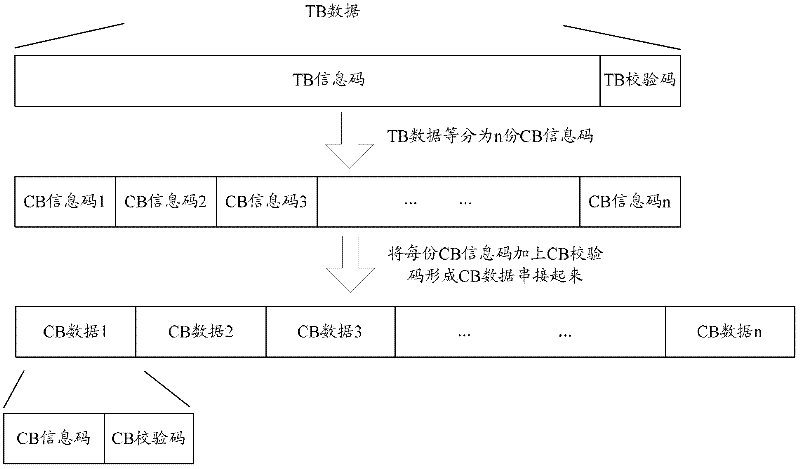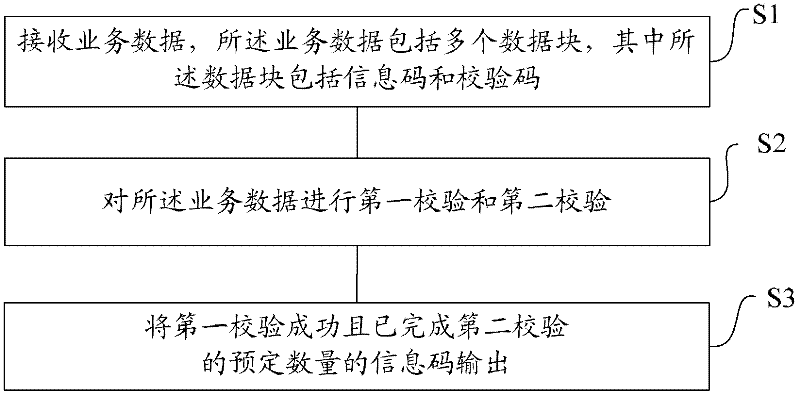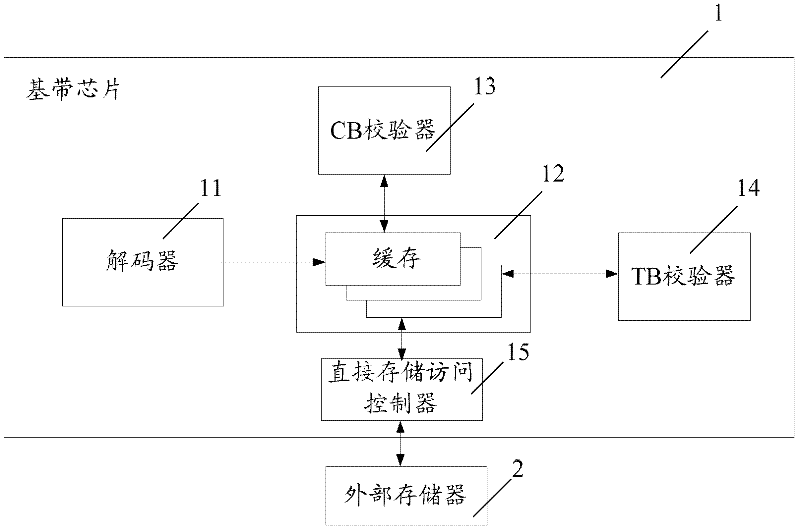Method and device for receiving service data in communication system, and baseband chip
A business data and communication system technology, applied in the field of business data receiving method and receiving device, and baseband chip, can solve problems such as multi-chip memory and occupation, and achieve the effect of saving buffer space
- Summary
- Abstract
- Description
- Claims
- Application Information
AI Technical Summary
Problems solved by technology
Method used
Image
Examples
Embodiment Construction
[0033] In view of the existing processing flow for receiving service data sent by the base station, the baseband chip in the user equipment needs to cache the entire TB of data, thereby occupying more chip memory. After research, the inventor provides a service data receiving in the communication system The method and the baseband chip realize that when the user equipment receives the service data sent by the base station, the cache of the baseband chip only needs to save part of the CB data, and does not need to reserve the storage space of the entire TB data, thereby saving the memory of the baseband chip .
[0034] In order to make the above objects, features and advantages of the present invention more comprehensible, specific implementations of the present invention will be described in detail below in conjunction with the accompanying drawings.
[0035] Such as figure 2 What is shown is a schematic flowchart of a specific implementation manner of a method for receiving...
PUM
 Login to View More
Login to View More Abstract
Description
Claims
Application Information
 Login to View More
Login to View More - R&D
- Intellectual Property
- Life Sciences
- Materials
- Tech Scout
- Unparalleled Data Quality
- Higher Quality Content
- 60% Fewer Hallucinations
Browse by: Latest US Patents, China's latest patents, Technical Efficacy Thesaurus, Application Domain, Technology Topic, Popular Technical Reports.
© 2025 PatSnap. All rights reserved.Legal|Privacy policy|Modern Slavery Act Transparency Statement|Sitemap|About US| Contact US: help@patsnap.com



